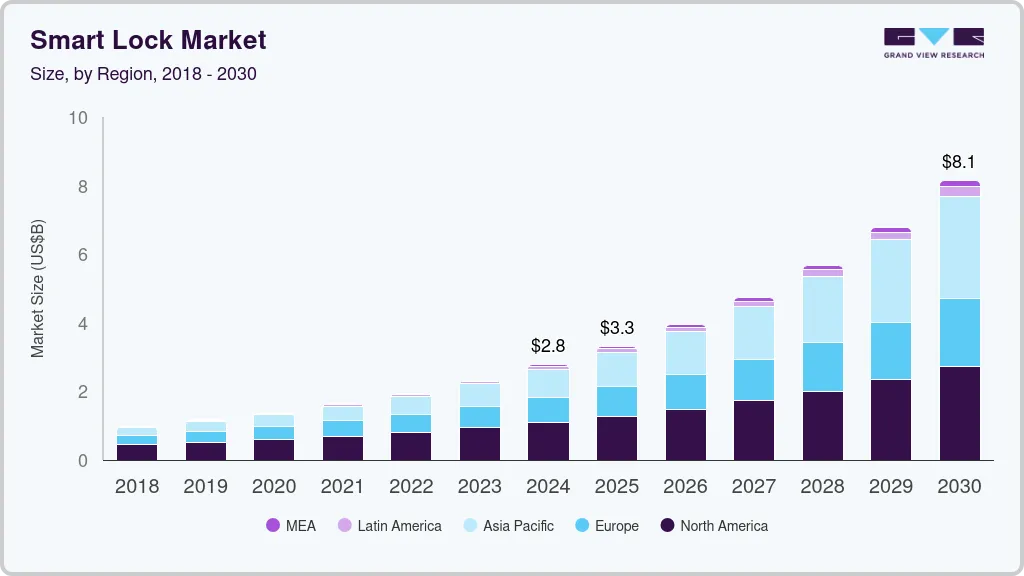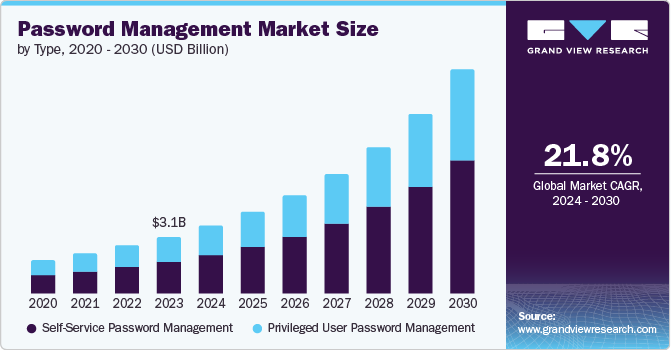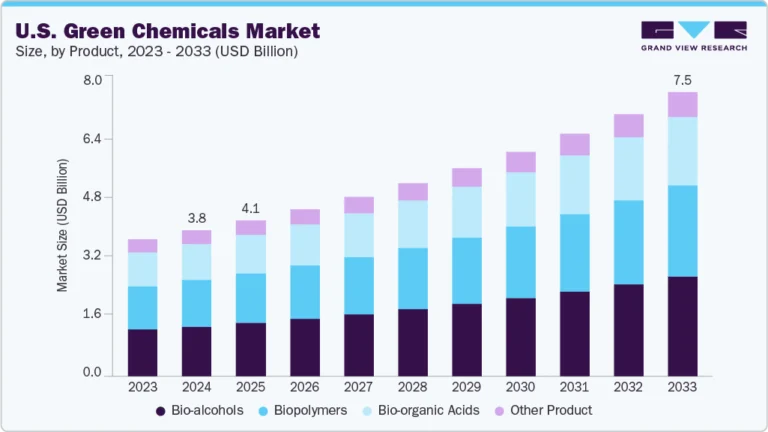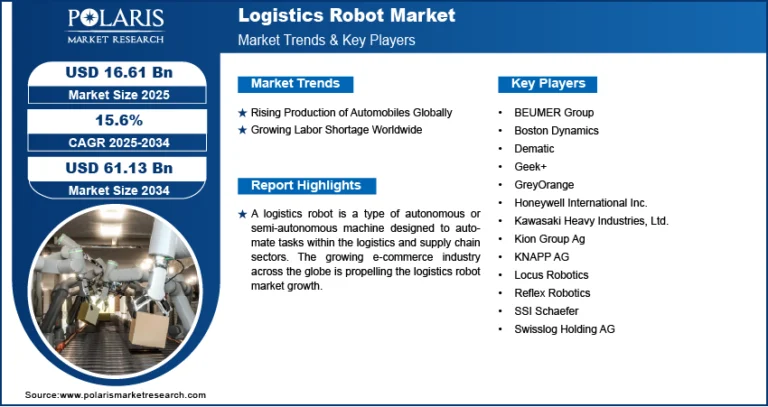Smart Lock Market Size, Share & Trends Analysis growing at a CAGR of 19.7% from 2025 to 2030

The global smart lock market size was estimated at USD 2,770.1 million in 2024 and is projected to reach USD 8,136.9 million by 2030, growing at a CAGR of 19.7% from 2025 to 2030. The market growth is largely driven by the rising adoption and advancements in connected home devices and smart home technology, driving the shift towards digitalization in both residential and commercial sectors.
Key Market Trends & Insights
- North America dominated the smart lock market with the largest revenue share of 39.49% in 2024.
- The smart lock market in the U.S. accounted for the largest revenue share of 81% in 2024.
- The smart lock market in Asia-Pacific is expected to grow at the fastest CAGR of over 24% in 2024.
- Based on application, the residential segment accounted for the largest market revenue share in 2024.
- Based on authentication method, the smartphone-based segment accounted for the largest market revenue share in 2024.
Market Size & Forecast
- 2024 Market Size: USD 2,770.1 Million
- 2030 Projected Market Size: USD 8,136.9 Million
- CAGR (2025-2030): 19.7%
- North America: Largest market in 2024
- Asia Pacific: Fastest growing market
Request a free sample copy or view report summary: https://www.grandviewresearch.com/industry-analysis/smart-lock-market/request/rs1
In addition, the increasing demand from consumers for secure, easy-to-use, and integrated solutions for their homes and businesses is positioning smart locks as the preferred modern access control system. These factors further accelerate the adoption of smart lock solutions, further boosting the smart lock industry expansion. The increasing focus on home automation and digital security, which are integral to the growing adoption of smart home devices worldwide, is a key driver in the smart lock industry expansion. Consumers are increasingly choosing keyless entry systems for their convenience, as they eliminate the need for physical keys and offer features such as remote access and real-time notifications. In commercial applications, smart locks are also enhancing security protocols with advanced features such as mobile app integration, geo-fencing, and voice control, making them attractive for businesses looking to streamline access control, thereby expanding the overall market growth.
Moreover, a growing integration of advanced biometric technologies, such as facial recognition and fingerprint scanning, is propelling the smart lock industry’s growth. These features enhance security and convenience by offering highly personalized and secure access, allowing users to unlock doors with a simple scan. In addition, the rise of voice-activated smart locks, integrated with platforms like Amazon Alexa, Google Assistant, and Apple HomeKit, is transforming how consumers interact with their smart homes. The growing demand for voice-controlled devices is expected to drive the adoption of smart locks in both residential and commercial markets.
Furthermore, energy harvesting technologies are expected to play a significant role in reducing dependency on batteries, further enhancing sustainability. With the growing number of smart home installations, smart locks are expected to be integrated with other home automation devices, such as security cameras, thermostats, and lighting systems, creating a seamless and interconnected smart home experience. As consumer demand for smarter, more secure, and more efficient living environments continues to rise, the smart lock industry is poised for significant innovation and expansion in the coming years.




![Crime Risk Report Market Analysis: Opportunities, Innovations, and Growth Potential Through [Forecast Period]](https://beeswire.com/wp-content/uploads/2025/07/imgi_4_crime-risk-report-market-size-worth-usd-64.00-billion-by-2034-768x407.png)

